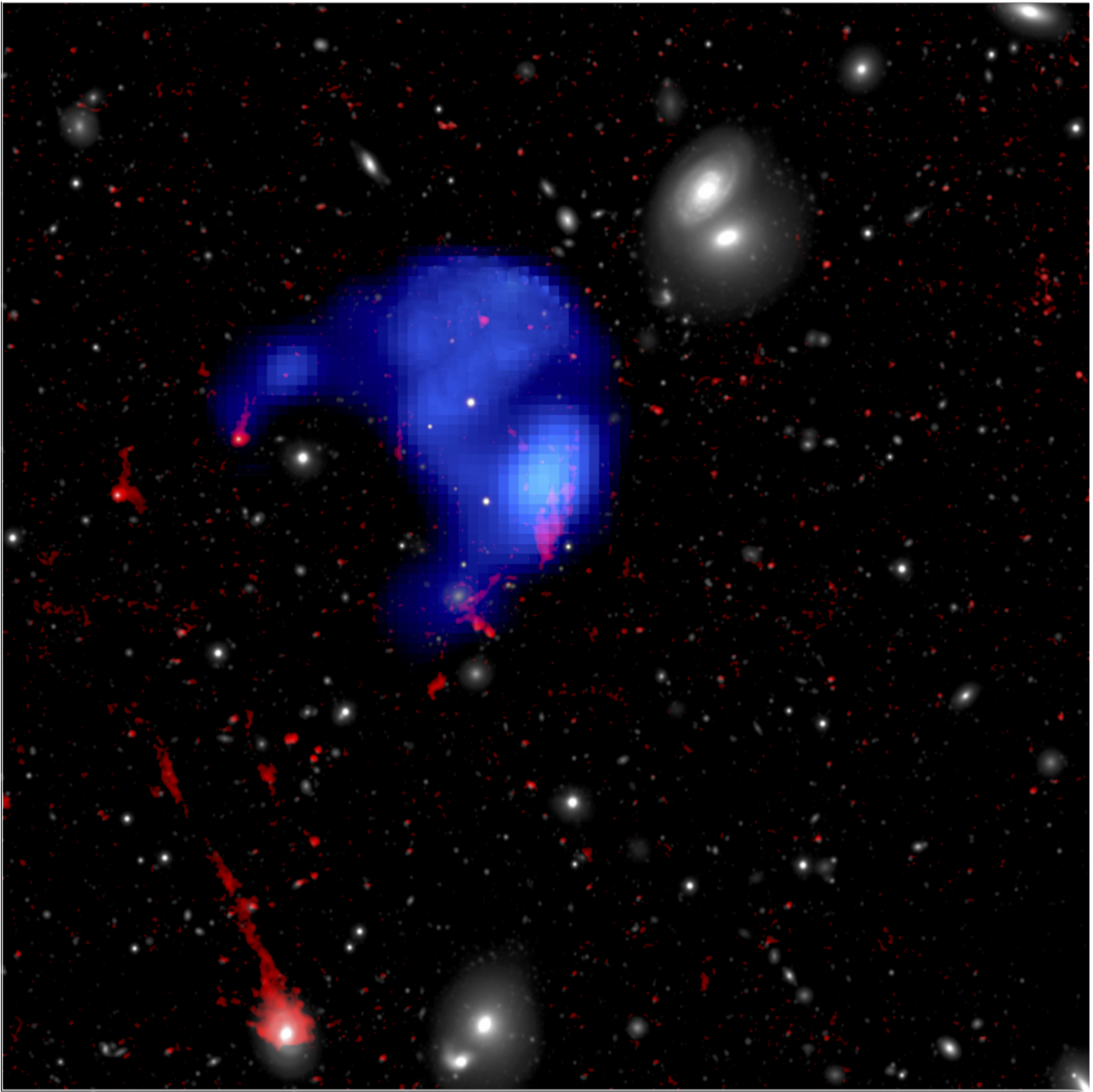
A favorite target for astrophotographers with large scopes, the Leo Cluster or Abel 1367 is about 300 million light-years from Earth. In 2017, astronomers taking images designed to reveal the faintest structures in this system found a small warm gas cloud. These observations were made with the eight-meter Subaru telescope in Hawaii.
Follow-up surveys of this system with the orbiting XMM-Newton telescope determined the gas is hot but not as hot as normal intra-cluster gas. It’s also not distributed normally. Instead of being distributed throughout the cluster in a smooth distribution that is hottest and densest in the cluster center, this material is just coolly hanging out off-center. Its temperature is actually consistent with what is normally found inside a massive galaxy, and in a new paper in Monthly Notices of the Royal Astronomical Society (MNRAS) and led by Chong Ge, researchers explain that this is likely a cloud of gas stripped out of a galaxy that has since journeyed on to other places.
This is a cool new snapshot of cluster evolution. We knew clusters stripped galaxies of gas, we knew that gas got incorporated into the cluster gas, and now we know that this process takes enough time that sometimes we get to see the gas without the galaxy.
More Information
ESA press release
“An H α/X-ray orphan cloud as a signpost of intracluster medium clumping,” Chong Ge et al., 2021 June 1, Monthly Notices of the Royal Astronomical Society



